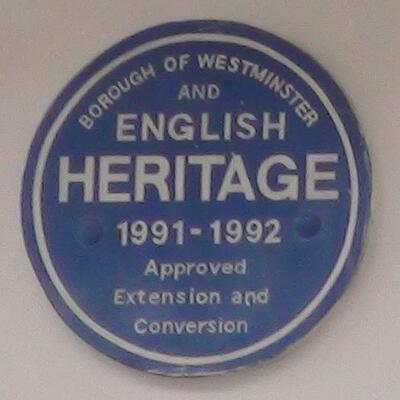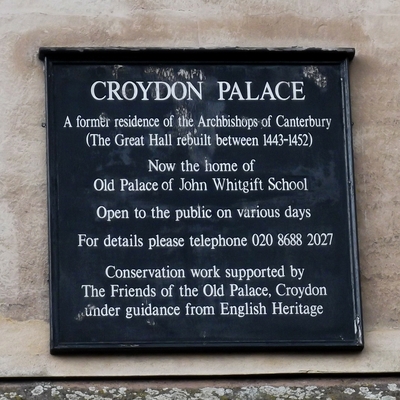English Heritage (officially the English Heritage Trust) is a charity that manages over 400 historic monuments, buildings and places. These include prehistoric sites, medieval castles, Roman forts, and country houses.
What is now generally known as the blue plaque scheme was initiated in 1866 by the Society of Arts. In 1901 it was taken over by the LCC and then in 1965 by its successor body, the GLC. When that was abolished in 1986 English Heritage took on the scheme.
Over the years hundreds of plaques have been erected and sadly some of these have been lost, often when their host buildings have been demolished. Steve Roffey has given himself the task of identifying these lost plaques and listing them on . Documenting existing plaques is a big enough task but finding the lost ones - that's far more difficult - for obvious reasons. Chapeau.
The Society of Arts' published announcements often did not give the inscription of the plaque so when the plaque itself has been lost, often so has the inscription.
The London County Council, taking over from the SOA, were meticulous in recording and publishing the details of their own work (certainly prior to 1940, when London found itself dealing with more pressing concerns). However, they seem to have regarded their predecessors' plaques as separate from their own. they only recorded these particulars in brief, via the appendices of some of the bound volumes of 'Indication of Houses of Historical Interest In London' published between 1907 and 1936, recording only the name of the recipient, the location and the name of the organisation 'other than the Council' responsible for putting the plaque up.
It wasn't until the cut-down 1960 version of the LCC post-war plaque list that the SOA inscriptions were recorded in a Council publication, by which time many of them had already been lost.
The first mention of the '20-year rule' (discouraging the erection of memorials until 20 years after the death of the recipient) only appeared in 1912.
Another rule for the scheme is that the building in which the person lived, worked, etc. must be still standing; none of that “on this site stood…” business. However rules are made to be broken and it seems that when the organisation running the official blue plaque scheme really wants to break this one they do it by erecting a non-“blue plaque” plaque.
In 1938 the LCC erected a memorial on 32 Soho Square which is a stone rectangle rather than a blue plaque, since the house in which the botanists lived and worked had just been demolished and rebuilt. The plaque has nothing on it to associate it with the LCC and does not appear in any of the LCC’s booklets.
The GLC’s 1970 commemoration of the site of Captain Cook’s house is equally non-standard in form but at least the GLC do own it, on the plaque itself.
We thank Steve Roffey for his work on the history of the blue plaque scheme. See also .














Comments are provided by Facebook, please ensure you are signed in to see them